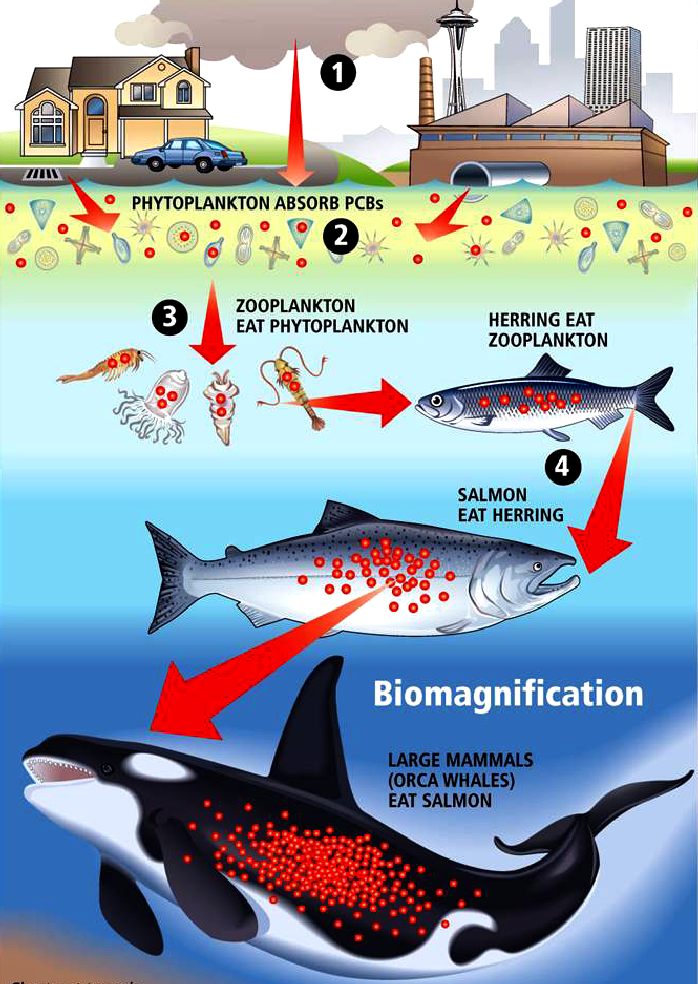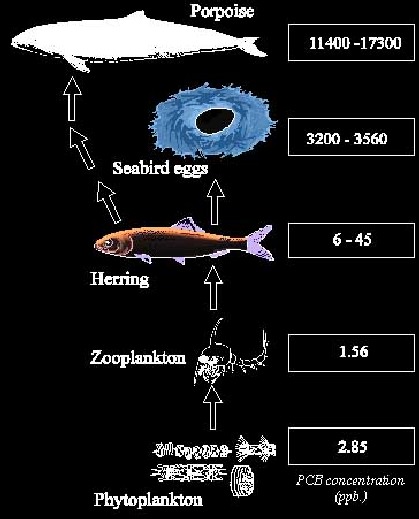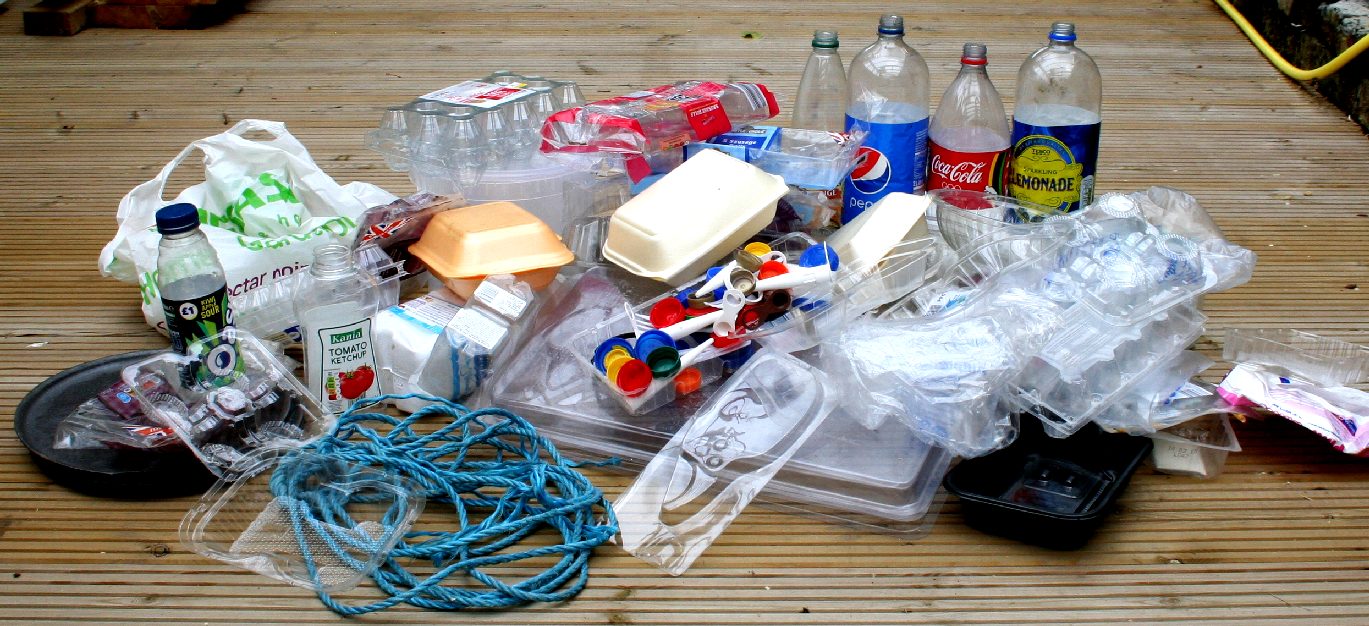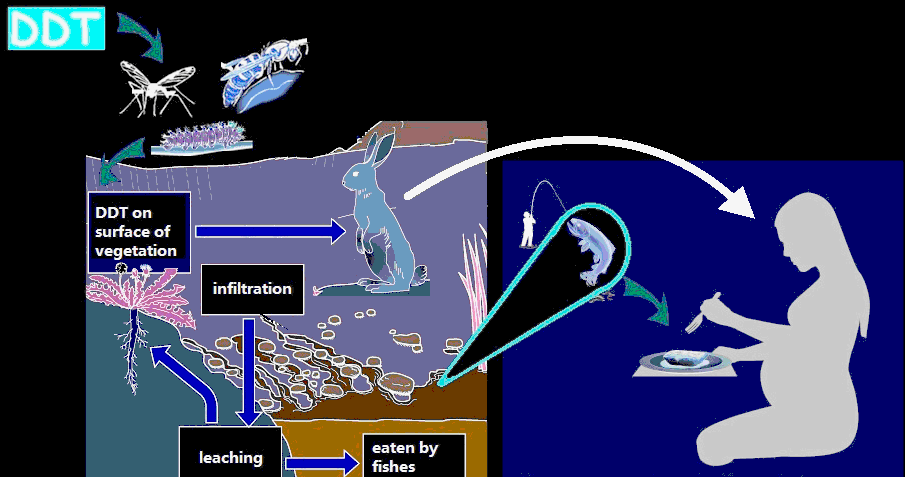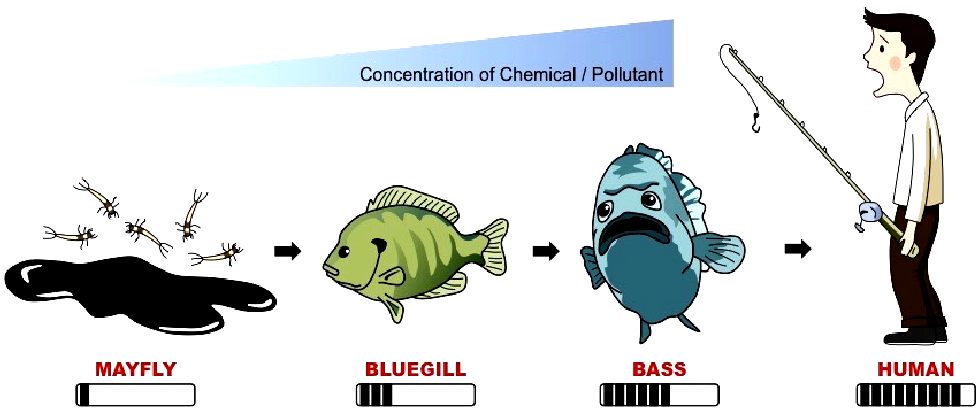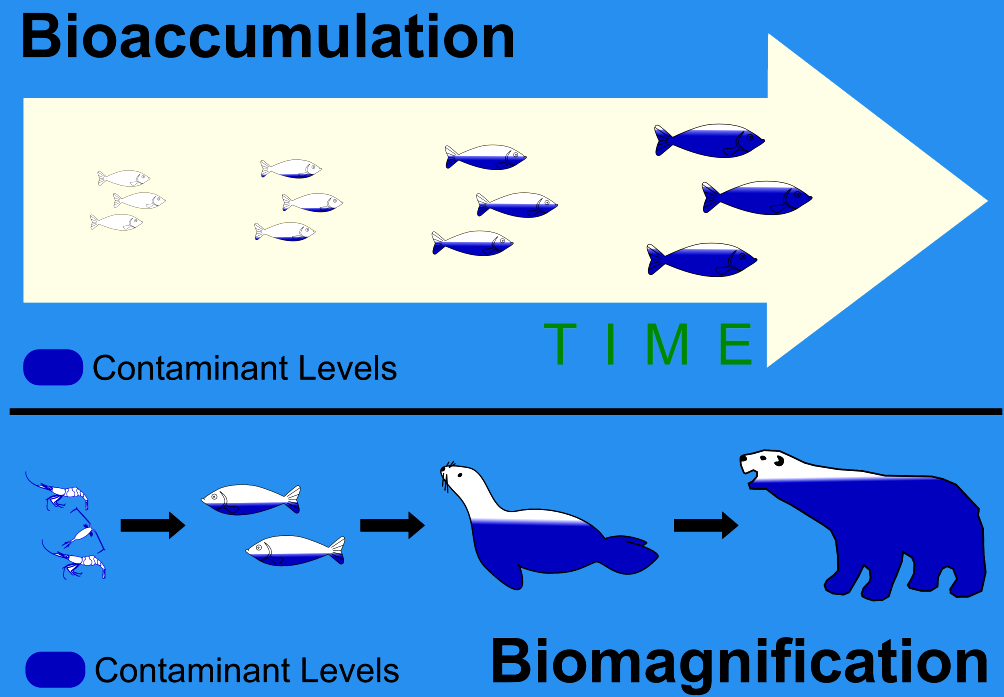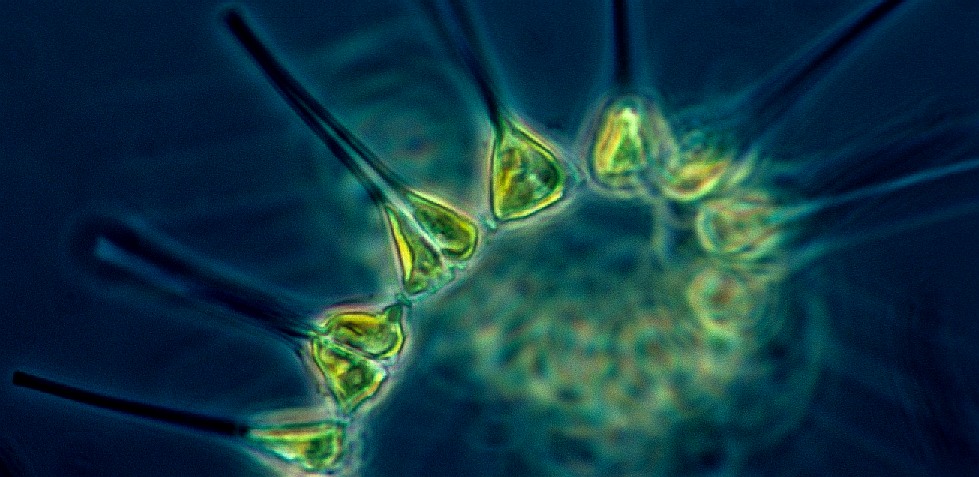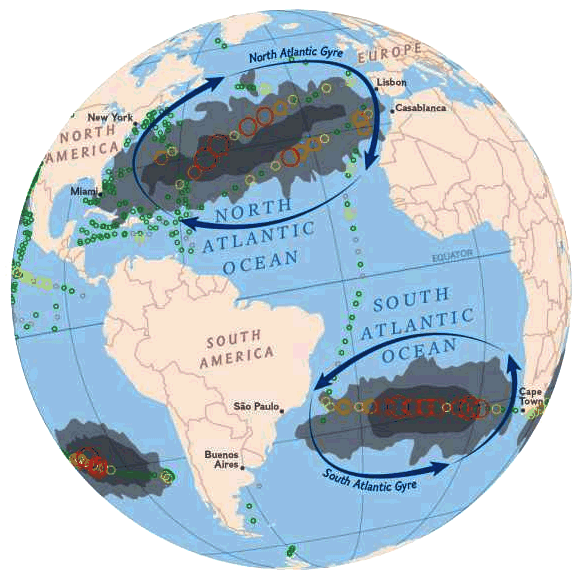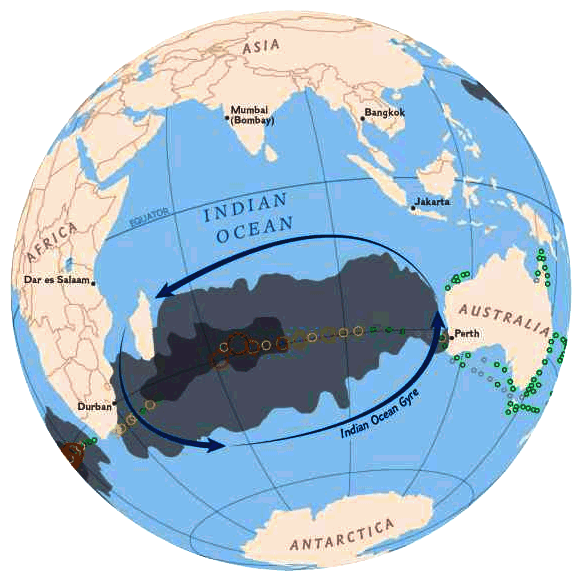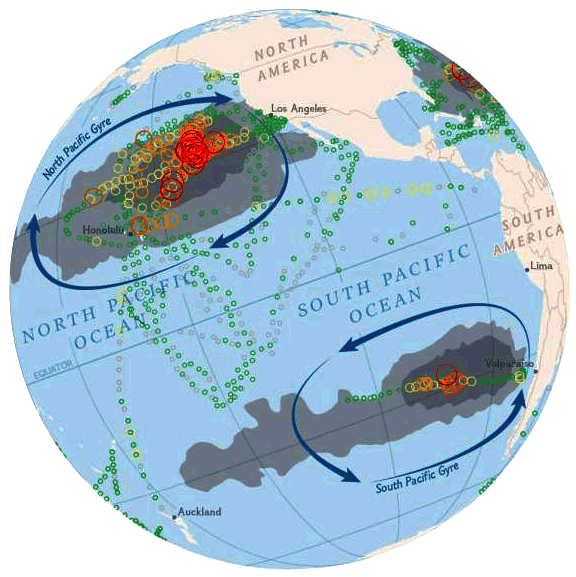|
BIOMAGNIFICATION
ABOUT - CLIMATE CHANGE - CROWDFUNDING - CONTACTS - DONATE - FOUNDATION - OCEAN CLEANUP - HOME - A-Z INDEX
Biomagnification, also known as bioamplification or biological magnification, is the increasing concentration of a substance, such as a toxic chemical, in the tissues of organisms at successively higher levels in a food chain. This increase can occur as a result of: *
Food chain energetics Ė where the substance's concentration increases progressively as it moves up a food chain *
Low or non-existent rate of internal degradation or excretion of the substance Ė often due to water-insolubility
An anchovy eats zoo-plankton that have tiny amounts of mercury that the zoo-plankton has picked up from the water throughout the anchovies lifespan. A tuna eats many of these anchovies over its life, accumulating the mercury in each of those anchovies into its body. If the mercury stunts the growth of the anchovies, that tuna is required to eat more little fish to stay alive. Because there are more little fish being eaten, the mercury content is magnified.
CARRIER - This is just a small sample of the plastic packaging that you will find in retails stores all over the world (and some fishing rope). A good proportion of this packaging - around 8 millions tons a year, will end up in our oceans, in the gut of the fish we eat, in the stomachs of seabirds and in the intestines of whales and other marine mammals, taking with it POPs in greater concentrations that will end up in the food you eat. Copyright photograph © 22-7-17 Cleaner Ocean Foundation Ltd, all rights reserved.
BIOMAGNIFICATION -
One of the classic examples of bioaccumulation that resulted in biomagnification occurred with an insecticide called dichlorodiphenyltrichloroethane (DDT).
FRESHWATER CHAIN - In this example, mayflies and other insects ingest chemical toxins that the bluegill (bream) eats. A young bluegills' diet consists of rotifers and water fleas. The adult diet consists of aquatic insect larvae (mayflies, caddisflies, dragonflies. The bass also eats insects and smaller fish and is highly sought after by fishing enthusiasts (anglers), commanding a high price in restaurants where protections have been applied due to dwindling stocks. At each stage of this food chain the POPs that the preceding animal has eaten over time, and not eradicated from their system, is passed to the next predator up the line - until man comes into the frame for his relatively concentrated toxic laden meal.
MERCURY POISONING
By way of example, though mercury is only present in small amounts in seawater, it is absorbed by algae (generally as methylmercury). It is efficiently absorbed, but only very slowly excreted by organisms. Bioaccumulation and bioconcentration result in buildup in the adipose tissue of successive trophic levels: zooplankton, small nekton, larger fish, etc. Anything which eats these fish also consumes the higher level of mercury the fish have accumulated. This process explains why predatory fish such as swordfish and sharks or birds like osprey and eagles have higher concentrations of mercury in their tissue than could be accounted for by direct exposure alone. For example, herring contains mercury at approximately 0.01 parts per million (ppm) and shark contains mercury at greater than 1 ppm.
DDT is thought to biomagnify and biomagnification is one of the most significant reasons it was deemed harmful to the environment by the EPA and other organizations. DDT is stored in the fat of animals and takes many years to break down, and as the fat is consumed by predators, the amounts of DDT biomagnify. DDT is now a banned substance in many parts of the world.
Today, most agricultural production takes place with the help of chemicals. These chemicals are inorganic substances added into the organismís metabolism as nutrients, to increase itís production. However, every organism has a limit up to which it can utilize nutrients. Anything extra just stays there. It gets left over.
When these chemicals begin to get accumulated in an organismís body, it is called bioaccumulation. That is bad enough, isnít it? Who wants chemicals in their bodies? But it doesnít stop there.
BIOACCUMULATION LEADS TO BIOMAGNIFICATION
GLOBAL WASTE PROBLEM - The above views of planet earth as global views show us the Atlantic, Indian and Pacific ocean gyres and estimates of plastic waste in (thousands) numbers of pieces of plastic waste per square kilometer of sea. The Pacific Ocean gyres are held to be the worst at the moment.
LINKS & REFERENCE
https://en.wikipedia.org/wiki/Biomagnification http://pasipgktb.blogspot.co.uk/2012/09/bioaccumulation-and-biomagnification.html http://news.nationalgeographic.com/news/2015/01/150109-oceans-plastic-sea-trash-science-marine-debris/ http://www.independent.co.uk/environment/plastic-waste-in-ocean-to-increase-tenfold-by-2020-10042613.html https://en.wikipedia.org/wiki/Marine_debris http://britishseafishing.co.uk/microplastics-and-ocean-pollution/ http://wef.ch/plasticseconomy
ABS - BIOMAGNIFICATION - BP DEEPWATER - CANCER - CARRIER BAGS - CLOTHING - COTTON BUDS - DDT - FISHING NETS FUKUSHIMA - HEAVY METALS - MARINE LITTER - MICROBEADS - MICRO PLASTICS - NYLON - OCEAN GYRES - OCEAN WASTE PACKAGING - PCBS - PET - PLASTIC - PLASTICS - POLYCARBONATE - POLYSTYRENE - POLYPROPYLENE - POLYTHENE - POPS PVC - SHOES - SINGLE USE - STRAWS - WATER
This website is provided on a free basis as a public information service. copyright © Cleaner Oceans Foundation Ltd (COFL) (Company No: 4674774) 2018. Solar Studios, BN271RF, United Kingdom. COFL is a charity without share capital.
|
